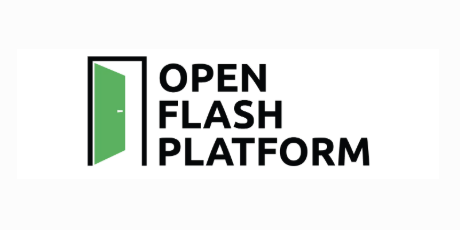
Image by Author
Starting a freelance data science business can be both exciting and challenging. The decisions to be made are plenty, from the technology to the business sides. The anxiety one may experience related to some of these choices can be overwhelming.
This article provides a clear, practical guide to help you choose a niche, find clients, and scale your business effectively. Whether you’re just starting out or looking to grow, you’ll find actionable steps to succeed.
The following steps offer invaluable, actionable insights on how to become a more profitable freelance data scientists.
1. Choosing a Niche
Data Science as an umbrella discipline consists of many specializations, including but not limited to:
- machine learning
- artificial intelligence (AI)
- natural language processing (or NLP)
- computer vision
- predictive analytics
- data engineering
(and much more!)
Inasmuch as it is important to have good general background knowledge about the various aspects of a profession (in this case, data science), choosing one and learning it in-depth to gain core competence and mastery sets you apart. This focus enables you to keep up with the competition in that field, instead of hopping from one niche to another with shallow knowledge of everything. Consider choosing a data science niche that aligns with your long-term interests, that you enjoy working on, and that plays to your strengths. Then, gain mastery of it.
2. Fundamental Tools Needed for Data Science
As with any business, there are basic requirements that must be met when starting. We will divide them into two categories, physical and software, and then list niche-specific tools.
Physical Tools
- A working computer (laptop or desktop)
- An affordable office setup, including the absolute essentials: a desk and a chair!
- A router, MiFi, or any other stable internet access medium
Software Tools
Here are some of the essential software tools you will need knowledge of when starting up your business:
- Programming languages (Python, R, SQL)
- Data manipulation and wrangling in Python and R (Pandas, NumPy, dplyr, and tidyr)
- Data visualization (Matplotlib, Seaborn, ggplot2, Power BI/Tableau)
- Big data tools such as: Apache Spark (for processing large-scale data), Hadoop (for storing and processing massive distributed datasets), Databricks (platform with a unified set of tools for data-centric operations)
- Machine learning tools such as: Scikit-learn (for classic machine learning operations and model building), TensorFlow or PyTorch (for deep learning), Hugging Face models (Transformer and BERT for NLP operations)
- Version control tools such as: Git and GitHub/GitLab for collaboration with other professionals and code versioning
- Learning and dataset platforms such as: Kaggle, which provides free datasets used for practicing and building solutions as well as competitions, Google Colab, which is a hosted Jupyter Notebook service that offers free GPU/TPU access for machine learning operations, Coursera and Udacity, which are are some of the outstanding learning platforms on which to hone your data science skills.
The physical and software tools mentioned above are largely requisite for your data science business. You should explore more useful tools that might have been omitted here in your chosen niche.
3. Building an Online Presence
The need for networking and building an online presence as a freelancer cannot be overemphasized. People are moved by what they see, and most of your potential clients will not know you in real life. An online presence is the bridge that links you to them. A popular saying goes: “What is not seen counts for nothing.” The same can be said for a freelancer who does not have an online presence.
Social media platforms make it easy to put yourself out there and publicize your craft. It helps you connect with fellow professionals, learn from what others are doing, learn about the industry’s best practices, and eventually reach potential clients. Some of the online platforms that you must consider joining and being active on are LinkedIn and X (Twitter). Many professionals receive job offers because they actively showcase noteworthy work, while others successfully reach out to potential clients and get hired.
4. Finding Clients
Finding clients as a freelance data scientist can be achieved through two main channels: physical outreach to organizations that may need your service or searching for jobs on online platforms dedicated to freelancers, with the latter being the more popular. Listed below are some of the popular freelance online platforms you can use to get paying clients in exchange for your service:
Explore just a few of these platforms, get familiar with them, and reach out to clients for jobs you know you can execute within the agreed time.
5. Additional Considerations
During the initial stages of your freelancing journey, be moderate with the prices you request from clients. Your initial focus should be on building credibility and a strong profile. Over time, as your expertise grows, you can gradually increase your prices.
Once you start getting clients, make it a habit to deliver high-quality work and pay close attention to detail. Completing and delivering work before the deadline is also crucial. This keeps clients satisfied with your service. By doing so, you will attract returning clients who may also refer you to others, confident in the quality of your work.
Once you have tangible earnings from your freelance business, reinvest in both hardware and premium software products that can boost your productivity. You can also consider running advertising campaigns to increase your reach and connect with potentially higher-paying clients.
Conclusion
The demand for data scientists has continued to soar over the recent years. In the US News and World Report in 2024, professionals like data scientists, software developers, information security analysts, and statisticians ranked among the top jobs based on demand and pay. This shows you how lucrative a data science business can be.
If you are considering starting a freelance data science business, there is no better time than now to tap into the high demand. The most important thing you need to do, even beyond the tips in this article, is to act! Do not procrastinate. Follow the steps laid out in this article diligently, and you will be well on your way.
Shittu Olumide is a software engineer and technical writer passionate about leveraging cutting-edge technologies to craft compelling narratives, with a keen eye for detail and a knack for simplifying complex concepts. You can also find Shittu on Twitter.

